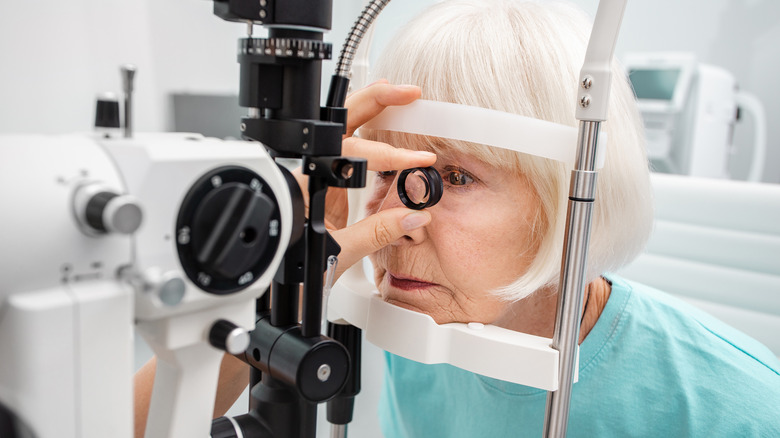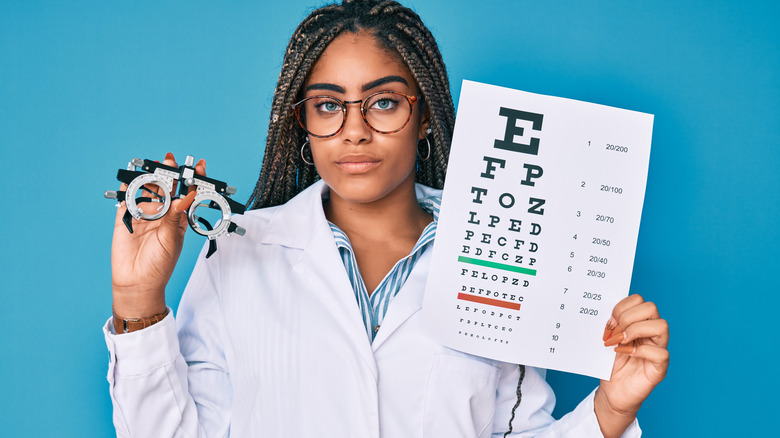What It Really Means To Be Legally Blind
What does the law have to do with it? If you've been deemed "legally blind" by the government, you are eligible for certain benefits from the Social Security Administration. Furthermore, "being classified as legally blind means you are unable to drive in any state," according to WebMD. In terms of your health, being legally blind means that your vision is diminished enough to pose safety risks when you're driving and affect things like your peripheral vision and depth perception.
Although doctors are involved in diagnosing vision loss or blindness, it's really the government that sets the standard for "legal blindness" (via WebMD). This is because it's the government that administers assistance like disability benefits and job training. Not sure all that this entails? Let's dig deeper into the system that is used to determine if someone is legally blind, and what criteria have to be met in order for someone to meet the standard of legal blindness.
What criteria have to be met to be considered legally blind?
Although the name might suggest otherwise, to be legally blind doesn't necessarily mean that you have complete vision loss. In fact, a lot of people who are considered legally blind have at least some vision in one or both of their eyes. Conditions like glaucoma, diabetic retinopathy, cataracts, and macular degeneration can cause partial vision loss, and thus legal blindness (via Verywell Health).
In order to determine if someone is legally blind, an eye exam is usually administered by an eye doctor, or optometrist. If you wear glasses or contact lenses, you'll be familiar with the eye test that is given, specifically the letters on the chart that get smaller and smaller. There are several other eye tests that can be administered by an eye doctor to test things like peripheral vision and reaction to light, which are important parts of vision as well (via Verywell Health).
If someone has a visual field of no more than 20 degrees or a visual acuity of 20/200 or less in their best eye, they are considered legally blind, according to Verywell Health. A visual field of 20 degrees means that a person's peripheral vision is very limited. Normally, a visual field will be around 180 degrees. Alternatively, a visual acuity of 20/200 means that the person would have to stand much closer to an object to be able to see it.


